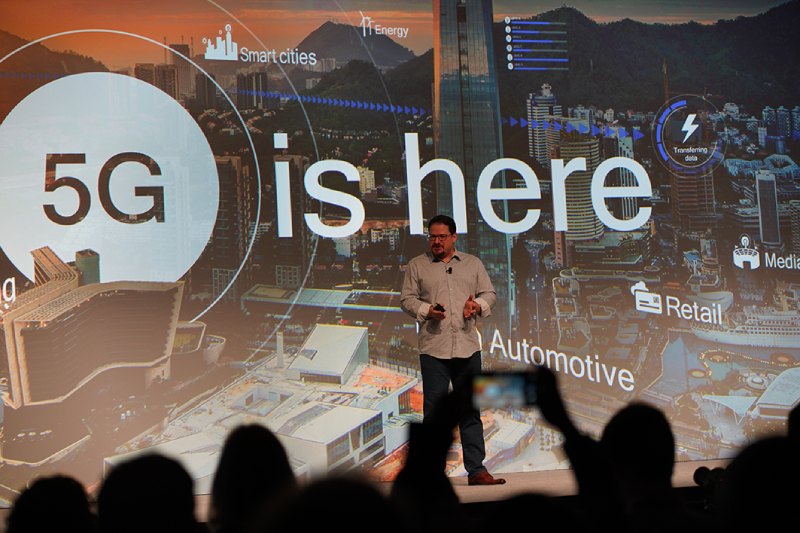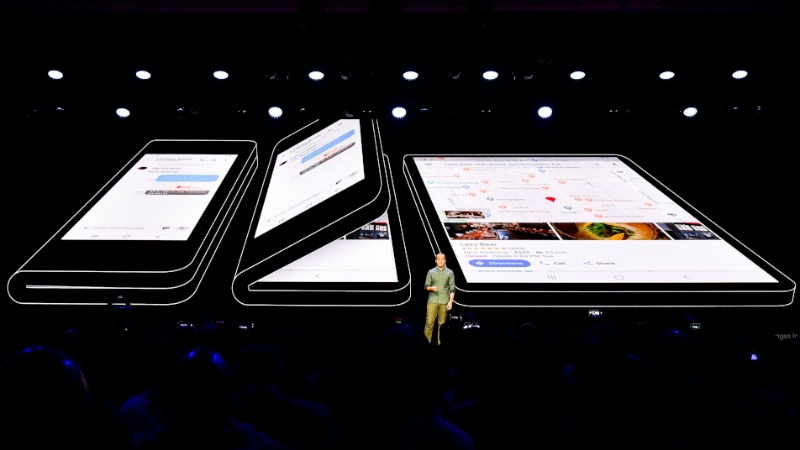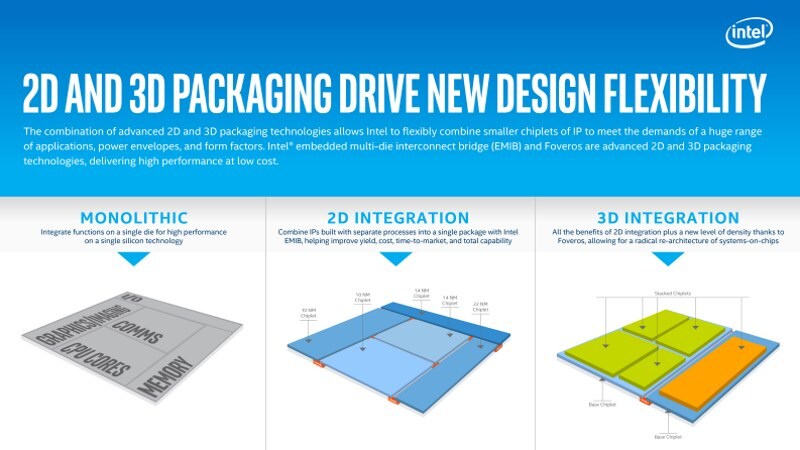New The Top Tech Trends to Watch Out For in New Year 2019
As we wake up in a new year, our focus turns from what has passed before us to what lies ahead. 2019 promises to be a year of major upheaval in the tech space, not only in terms of the devices we use every day, but also the infrastructure and culture around us. A lot of things that have been in development over the past several years are finally set to become parts of our everyday lives. Everything from the way we communicate with each other and interact with our devices, to how we manage our transportation, healthcare, food, and finances could see major shakeups – or at least the beginnings of them. 2019 is only just beginning, but plans are already in motion. Here’s how your world is going to change in the very near future.
1. 5G will roll out in many parts of the world
Plans and promises have been made for the past several years, but we’re now beyond that and are seeing the first demos of actual devices and infrastructure in action. The standards are ready and the backhaul is being deployed. In the USA, major cellular service providers have already announced which cities they will be launching in and several smartphone manufacturers including Samsung, OnePlus and Huawei have confirmed that they will be launching devices in 2019.
The first 5G smartphones will very likely be launched or at least announced at MWC 2019 in February though we wouldn’t be surprised if teasers and leaks start popping up right now. Just like with the rollouts of 3G and 4G, it’s likely that network operators will promote fixed data connections for homes and offices to take advantage of 5G network speeds before mobile devices are ready to roll out. Even when 5G networks do begin rolling out, coverage is likely to be limited to big cities, and perhaps even select areas within those cities to begin with.
So what will 5G actually do? It’s not just about speed; one of the big differences between 4G and 5G will be extremely low latency. That’s key for real-time applications such as autonomous vehicles being able to sense what’s around them, and more realistic virtual reality environments. We’re also looking at the potential for millions of new IoT (Internet of Things) devices to jump online, from tiny passive sensors to appliances, drones, and robots.
Companies are expecting 5G adoption to be quicker than it was for 4G. In India, the 4G transformation was remarkably rapid, and 4G can easily be taken for granted today. Given how much money operators have spent on spectrum and infrastructure we can expect 5G to take a little time to roll out here, but it should be mainstream very soon after introduction.
5G will of course introduce new challenges into our lives. One concern already being spoken of is the sheer amount of data that all our devices will generate on their own, and how it is to be stored, interpreted, and shared between devices safely. Also, as more and more aspects of our life become interconnected and dependent on technology, there will be challenges such as censorship, privacy, and security to worry about.

Qualcomm President Cristiano Amon at the 2018 Snapdragon Tech Summit
2. More powerful AI will blur the lines between fact and fiction
We’re already seeing AI powerful enough to synthesise speech in other people’s voices, and generate completely believable “photos” of people that don’t exist. The potential to create hyper-realistic fiction will be used and abused widely, beginning right now.
We already have problems with photoshopped and edited media and we’ve seen multiple times how easy it is to manipulate huge numbers of people using social media and messaging apps. Now, all kinds of companies are going to have to deal with sorting the real from the fake, and hopefully educating users to do research and check for alternative sources of information before blindly believing what they see. An unfortunate potential side effect of course is that people might lose trust in perfectly legitimate sources of information.
As we allow AI voice assistants, smartphone features, and even cars to learn about and direct more of our lives, we’re going to have to decide where we draw lines, as individuals and as societies. Beyond that, we’re going to have to deal with biases in AI itself, which are picked up after studying huge sets of human-generated data.
More than technology, we’re going to require a huge cultural shift, where people learn to process information rationally and methodically rather than reacting based on gut instinct. We can also expect to have to deal with major ethical issues – can we “hurt” AI based devices, and do we feel empathy for them? Can we let a car decide whether to kill its occupants or pedestrians, if no other outcome is possible in an accident?
3. Smartphone design will need break out of the box
For years, one big complaint about smartphones has been how they all look and feel the same. The year 2018 saw companies begin to play with different screen sizes and shapes. Nearly every Android manufacturer raced to add a notch in early 2018 and is now racing again to drop it.
Curved OLED screens will be a reality, at least for Samsung, which has been teasing a folding phone/ tablet hybrid for years. Microsoft, Oppo, and LG are also rumoured to be working on foldable phones.
Hole-punch front cameras are already inevitable, but will this be just another passing fad? We’ve yet to actually see how these phones look in the real world, how the cameras actually work, and whether a hole is more distracting than a notch.
We can bet that plenty of phones will try impressing buyers with more than two rear cameras, and we hope to see more useful innovations than gimmicks. AI features will hopefully help with camera quality in meaningful ways, such as Google’s remarkable Night Sight feature.
There is no sign of a slowdown in the Indian market, where there’s furious competition at nearly every price point. So far, brands have focused on improving core specifications such as processors, screens, storage and RAM. Now, we’d also like to see quality-of-life features such as quick charging, durable materials, and waterproofing in the budget segment.
Innovations like this will be necessary as the global smartphone market stagnates and it becomes less and less necessary to upgrade. Digitimes, which watches the Taiwanese supply chain, predicts that there won’t be any shipment growth in the smartphone segment compared to 2018, and IDC actually expects only minor growth in 2019 after a slight drop this year.

Samsung has confirmed that it will soon launch a foldable smartphone-tablet hybrid
4. Security threats will become bigger and scarier
There were some pretty serious security nightmares in 2018, from data breaches and scams to the Spectre and Meltdown vulnerabilities in processor hardware. We can only expect this to get worse in 2019, as more parts of our lives get tangled up in technology.
We can expect abuse online to get worse, and new channels for security issues to reach unsuspecting users will emerge. Social and financial manipulation tactics will get more sophisticated. Large-scale breaches of cloud services or companies’ sensitive records are quite likely.
It’s up to individuals to be wary and keep ourselves educated about how and when our tech could be misused, especially with so many new products and services emerging on the backs of the 5G, AI, and the IoT.
It’s likely that we’ll see more countries use legislature to regulate privacy, and consumer rights. If we’re vocal enough, companies will have to self-regulate and make clear statements about their ethical positions regarding the data they collect and how it is secured.
Apple will be left behind unless it makes big changes
Apple has positioned itself as more of a premium brand than ever before, and many of its 2018 launches cemented the fact that it cares much more about premium design than affordability or even, in some cases, useful features. Major new products were launched, but a combination of higher US prices, a weaker Rupee, and tighter controls on dealer discounts have pushed Apple laptops and phones out of many people’s budgets.
That, plus the company’s refusal to do things like bundle fast chargers, and the high costs of even simple accessories, mean that it could lose a lot of its appeal in India. Far from attracting new buyers, even those who need an upgrade will be tempted to look elsewhere.
Does Apple understand what buyers want anymore? We hope to see some radical shifts, similar to the adoption of USB Type-C at the expense of Lightning with the latest iPad Pro models.
We’re also optimistic about the promised Mac Pro refresh, which will supposedly illustrate the company’s commitment to pro users.
6. Intel will continue to cede ground to competitors
Intel has had a rough few years. Despite having a competent lineup of desktop processors, the company has lost the smartphone race and has not yet shown off 5G modems at the level that rival Qualcomm has.
10nm CPU production has hit snag after snag, and the company has recently had to fend off allegations that it has scrapped 10nm plans altogether. The delays have led to an unprecedented lengthening of its 14nm architecture’s lifespan, when competitors have jumped to 12nm and now already to 7nm. Even worse, there has been such a shortage of 14nm parts that prices have spiked, giving competitor AMD more advantages than it could ever have dreamed of.
Intel has shown off some very ambitious and creative plans for its turnaround, and the company is far too big to lose all its momentum. It has also done quite well with its latest 8-core CPU, the Core i9-9900K, and has put a very strong team in place to tackle graphics and AI.
That doesn’t mean that 2019 will be easy, though. This will be a pivotal year for Intel, and it will have to lay a lot of groundwork to come roaring back in 2020.

Intel has disclosed its 3D-stacked “chiplet” design strategy and Sunny Cove architectur
7. Facebook will continue to be problematic but it isn’t going anywhere
This year has been full of drama for Facebook, from massive-scale data breaches and privacy holes to accusations of allowing advertisers to read users’ private data, to widespread misinformation and political influence being spread on the platform. The company has promised major changes and has become a little more proactive about cleaning up its recommendations and encouraging users to be more responsible, but Facebook’s sheer scale and reach make it hard to regulate.
The problem of course is how enmeshed all of us are in our Facebook accounts and connections. Despite calls to “Delete Facebook”, few are likely to actually do so. That extends to Instagram and WhatsApp, and the company is always looking for the next big trend to latch on to. With the Stories format exploding in popularity across Facebook’s properties, users aren’t likely to give it up anytime soon – even if an alternative were to present itself, Facebook would likely try to buy it out or copy it.
8. Indian consumers have an interesting year ahead
There are quite a few things on the horizon for Indians in particular to look forward to. One is the long-awaited launch of Jio GigaFibre, which we were expecting this year. Given how the company managed to shake up the cellular service industry, we hope that this launch will give home broadband users the speeds and prices we all deserve.
Another service we’ve been waiting a long time for is Spotify. We already have Apple Music, Amazon Prime Music, and JioSaavn, but competition is always welcome and Spotify has had huge success internationally because of its interface and the ease of discovering new music.
The booming online retail scene might have to significantly reorganise itself based on a very recent government policy prohibiting Amazon and Flipkart in particular from carrying exclusive products or offering promotional discounts and offers. The move will affect not only these companies’ private label brands, but also the large number of online-exclusive players that have benefited from their logistics and infrastructure. We hope that all the discounts we’ve become used to don’t dry up, but we’ll have to wait and see how this turns out.
What are you most looking forward to in 2019, and what are your predictions for technology this year? Do let us know in the comments section.
[ad_2]

